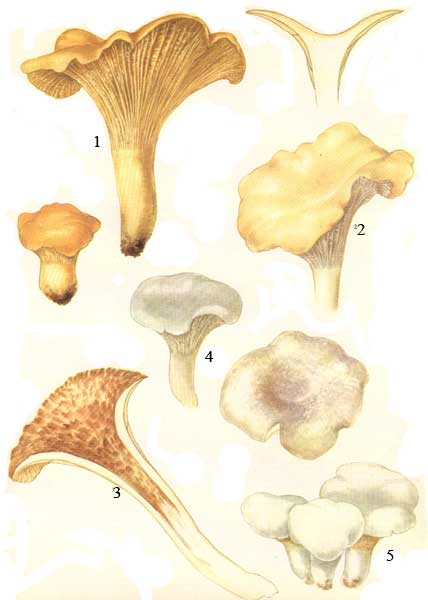
CANTHARELLUS CIBARIUS (1)
It has the shape of a filled -up funnel, 3-10 cm; the upper part velvety, moist, but soon glabrous and dry; with undulate and crispate margin; from slightly above the base, to the margin, it is covered with coarse lamellae; entirely golden yellow; but the variety neglectus (2) is paler, thinner, and with violaceous down on the lamellae; the variety albus is white; the variety amethysteus (5) is yellow, but with squamules or with a violet disk on the cap; the variety ianthinox-anthus has amethystine gills. Flesh slightly fibrous and tenacious; white or yellow, depending on the different varieties. Odor agreeable. Flavor slightly acrid. Spores white or yellowish. It grows from spring to autumn, in woods, in the moss, in groups. Edible. Similar to it and also edible: Cantharellus Friesii, orange color, Cantharellus olidus, rosy, with odor of candy; grows in autumn, near spruces. Cantharellus sinuosus, brown or fuliginous, with ridges atrophic and faded yellow; found under latifoliate trees.
CANTHARELLUS FLOCCOSUS (3)
Hollow, 12-24 cm high, yellow, tending here and there to pink and to red; squamose internally; grows in the Far East and in North America; edible.
CANTHARELLUS PALLIDUS (4)
Whitish, with amethystine cinereous shades; grows in Japan;
considered as not edible. However, the small Cantharellus cinnabarinus is edible; it is entirely red; found in North America.